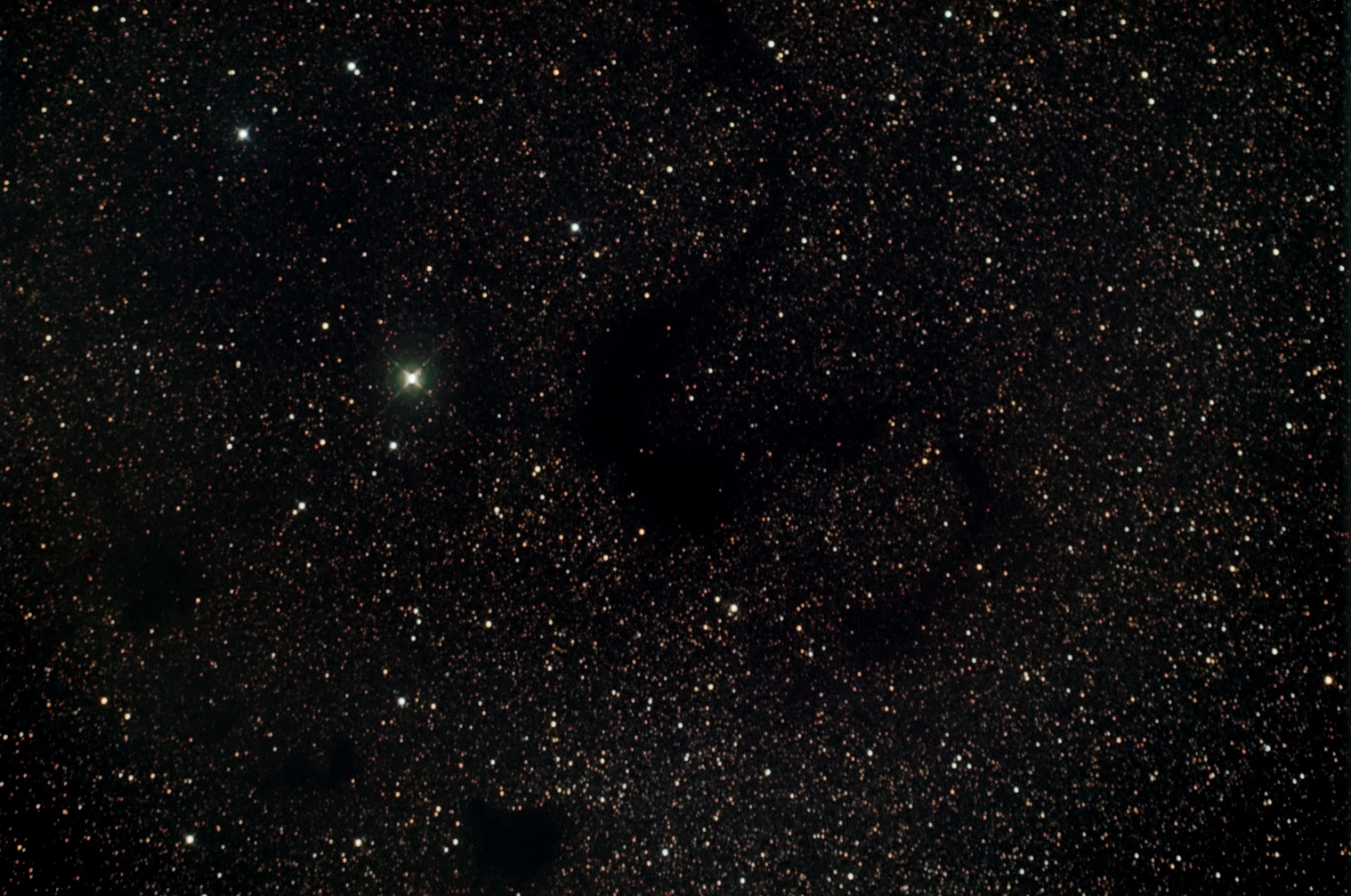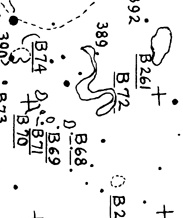
The Snake Nebula is also known as Barnard 72. It is a dark nebula. Dark nebulae are detectable as starless forms usually visible against the backdrop of the myriad of faint stars in the Milky Way. Dark nebulae like B72 can only be seen by virtue of the fact that the cloud of gas and dust forming the nebula blocks the light from stars in the background. Barnhard 72 has an opacity rating of 6 by the Deep Sky Field Guide, which is the maximum rating given to dark nebulae. B72 lies only about 1/2 degree south of where the ecliptic goes through Ophiuchus. If this cloud of gas was located sufficiently close to a star so the cloud of gas received strong ultraviolet radiation from the nearby star, the nebula would glow red as an emission nebula.
Early in the 20th Century, a catalog of a number of dark nebulae was published that the astronomer E.E. Barnard was able to identify photographically. The designation B72 is a reference to the number assigned to this dark nebula by Barnard in his list. In this image, the Snake Nebula is the dark "S-shaped" cloud. The position given for this long twisting nebula in Barnhard's Catalog of Dark Nebulae is the southern part, or bottom, of the letter "S" formed by the nebula. The other dark nebulae visible in the lower left of this image are, from left to right, (and top to bottom), B70, B71, B69 and B68, respectively. In this image, north is to the right. If you have trouble identifying the dark nebulae in this image, refer to the excerpt below of E.E. Barnard's Chart No. 20 in which he identified the nebulae. B68 at the bottom center of this image is located about 40 arc-minutes southwest of B72. B68 is described as sharply defined in Barnhard's Catalog of Dark Nebulae, because it has a particularly well-defined border in some places. B68 has an opacity rating of 6. B70 has an opacity rating of 4, and a couple of stars can be seen dimly shining through the nebula. B71 is tiny and only a little over one arc-minute in diameter.
E.E. Barnard's Catalog included a total of 370 dark nebulae entries. I have images of other dark nebulae in the catalog, including B263 in Scorpius, B86 in Sagittarius, and B33 in Orion, commonly known as the Horsehead Nebula. Other examples of dark nebulae include the Great Rift in the Milky Way, and the Coal Sack in the southern sky.
This is an RGB composite CCD image taken with an SBIG ST-8XE CCD using a Takahashi Epsilon 250 telescope. The image was taken from my backyard in Scottsdale, Arizona.
 Excerpt from Chart No. 20 made by E.E. Barnard
Excerpt from Chart No. 20 made by E.E. Barnard
B72
Constellation: Ophiuchus
RA: 17h 23m 41s Dec: -23d 40' 37" (J2000)
July 10, 2005
Image by Sid Leach
Scottsdale, Arizona
Recent Images.
Complete list of images.
Description of equipment used to acquire images.
Home
Feedback and comments should go to Sid